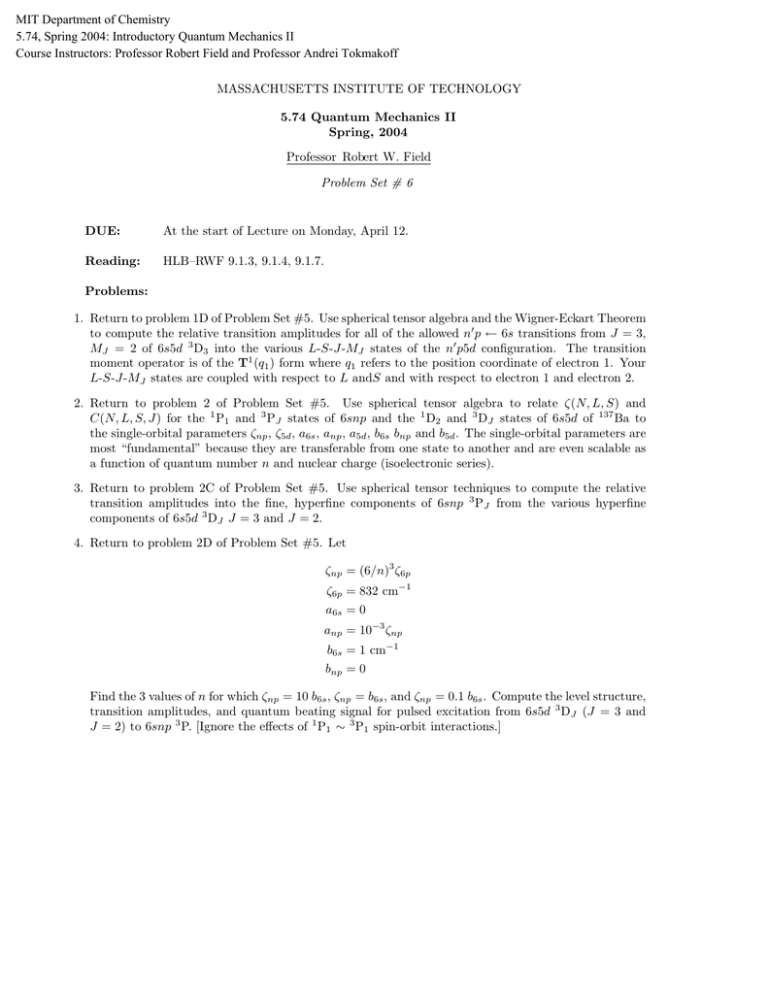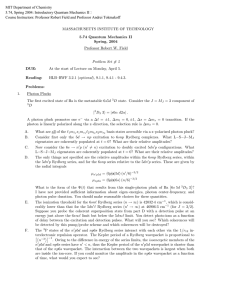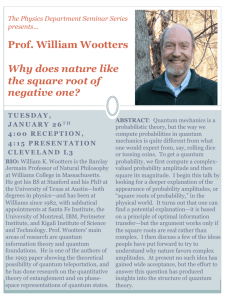MIT Department of Chemistry 5.74, Spring 2004: Introductory Quantum Mechanics II
advertisement

MIT Department of Chemistry 5.74, Spring 2004: Introductory Quantum Mechanics II Course Instructors: Professor Robert Field and Professor Andrei Tokmakoff MASSACHUSETTS INSTITUTE OF TECHNOLOGY 5.74 Quantum Mechanics II Spring, 2004 Professor Robert W. Field Problem Set # 6 DUE: At the start of Lecture on Monday, April 12. Reading: HLB–RWF 9.1.3, 9.1.4, 9.1.7. Problems: 1. Return to problem 1D of Problem Set #5. Use spherical tensor algebra and the Wigner-Eckart Theorem to compute the relative transition amplitudes for all of the allowed n p ← 6s transitions from J = 3, MJ = 2 of 6s5d 3 D3 into the various L-S-J-MJ states of the n p5d configuration. The transition moment operator is of the T1 (q1 ) form where q1 refers to the position coordinate of electron 1. Your L-S-J-MJ states are coupled with respect to L andS and with respect to electron 1 and electron 2. 2. Return to problem 2 of Problem Set #5. Use spherical tensor algebra to relate ζ(N, L, S) and C(N, L, S, J) for the 1 P1 and 3 PJ states of 6snp and the 1 D2 and 3 DJ states of 6s5d of 137 Ba to the single-orbital parameters ζnp , ζ5d , a6s , anp , a5d , b6s bnp and b5d . The single-orbital parameters are most “fundamental” because they are transferable from one state to another and are even scalable as a function of quantum number n and nuclear charge (isoelectronic series). 3. Return to problem 2C of Problem Set #5. Use spherical tensor techniques to compute the relative transition amplitudes into the fine, hyperfine components of 6snp 3 PJ from the various hyperfine components of 6s5d 3 DJ J = 3 and J = 2. 4. Return to problem 2D of Problem Set #5. Let ζnp = (6/n)3 ζ6p ζ6p = 832 cm−1 a6s = 0 anp = 10−3 ζnp b6s = 1 cm−1 bnp = 0 Find the 3 values of n for which ζnp = 10 b6s , ζnp = b6s , and ζnp = 0.1 b6s . Compute the level structure, transition amplitudes, and quantum beating signal for pulsed excitation from 6s5d 3 DJ (J = 3 and J = 2) to 6snp 3 P. [Ignore the effects of 1 P1 ∼ 3 P1 spin-orbit interactions.]








